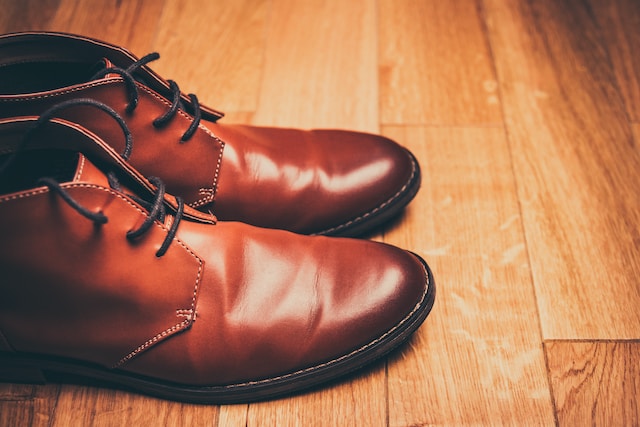When it comes to workplace safety, one essential aspect often overlooked is the importance of appropriate footwear. Safety shoes are designed to protect workers' feet from various hazards in different work environments. However, not all safety shoes are created equal.
8 Types of Safety Shoes
In this blog post, we will explore the different types of safety shoes available for workers, highlighting their features, benefits, and ideal work settings. By understanding the various options, you can make an informed choice to ensure the utmost safety and comfort for yourself or your employees.
1. Steel-Toe Safety Shoes
Steel-toe safety shoes are one of the most popular and widely used types of safety footwear. These shoes feature a reinforced steel cap in the toe area, providing protection against heavy objects, falling debris, and compression hazards. Workers in construction, manufacturing, and heavy industries often rely on steel-toe safety shoes. They offer excellent impact resistance and are highly durable. However, they may be heavier than other options and may conduct temperature more readily, requiring additional insulation in extreme weather conditions.
2. Composite-Toe Safety Shoes
Composite-toe safety shoes are an alternative to steel-toe shoes, offering similar protection but without the metallic component. Instead, they use non-metallic materials such as fiberglass or carbon fiber. Composite-toe shoes are lighter than steel-toe shoes and offer better insulation against temperature extremes. These shoes are ideal for workers in industries where metal detection is required, as they do not set off alarms. Additionally, workers in electrical fields benefit from the non-conductive nature of composite materials. However, they may have slightly reduced impact resistance compared to steel-toe shoes.
3. Metatarsal Guard Safety Shoes
Metatarsal guard safety shoes are designed to protect the metatarsal bones, located in the midfoot area. These shoes feature additional protection over the toe and foot arch, guarding against impact and compression hazards. Industries such as mining, construction, and heavy machinery operations often require metatarsal guard safety shoes. These shoes provide comprehensive foot protection and are typically constructed with durable materials. However, they may be bulkier and heavier than other safety shoe options, requiring workers to adapt to the additional weight.
4. Electrical Hazard (EH) Safety Shoes
Electrical hazard (EH) safety shoes are specifically designed for workers in electrical industries. They provide protection against electric shock by incorporating insulation materials and non-conductive outsoles. EH safety shoes meet specific safety standards to minimize the risk of electrical hazards in the workplace. Workers in electrical maintenance, utility, and construction sectors benefit from wearing EH safety shoes. It's crucial to ensure the shoes have proper certification and meet relevant electrical safety standards.
5. Slip-Resistant Safety Shoes
Slips and falls are common workplace accidents that can lead to severe injuries. Slip-resistant safety shoes are designed with specialized outsoles that provide excellent traction on slippery surfaces. These shoes are suitable for workers in restaurants, healthcare facilities, and any other environment where liquids or oily substances may be present. Slip-resistant safety shoes reduce the risk of accidents, enhancing overall workplace safety.
6. Weatherproof and Waterproof
One of the key attributes of Wellington boots is their exceptional weatherproofing and waterproofing abilities. Constructed from high-quality rubber, these boots effectively shield the wearer's feet and lower legs from moisture, ensuring they remain dry even in wet and muddy conditions. Wellington boots are ideal for outdoor activities such as gardening, farming, fishing, and hiking, where protection against rain, mud, and puddles is essential.
7. Chemical Resistant Shoes
Chemical resistant shoes serve as a crucial line of defense against the harmful effects of hazardous chemicals. When chemicals come into contact with the skin, they can cause burns, irritation, or even more severe health issues. Chemical resistant shoes are designed with materials that provide a barrier between the feet and the chemicals, preventing direct contact and reducing the risk of injury. They are particularly vital in industries such as chemical manufacturing, pharmaceuticals, laboratories, cleaning services, and agriculture, where workers handle corrosive substances on a regular basis.
8. Welding Boots
Welding involves high temperatures and sparks, making heat and fire resistance crucial for welding boots. These boots are typically made of durable materials such as leather, which can withstand the intense heat generated during welding processes. Additionally, they feature fire-resistant stitching and non-combustible soles to protect against sparks and molten metal splatter. Welding boots provide a barrier that prevents heat from reaching the feet, reducing the risk of burns or other thermal injuries.
SAMS Solutions: Safety Shoes provider at workplace safety
Leading provider of workplace safety solutions that help organizations ensure the safety and well-being of their employees. With a focus on innovation, quality, and customer satisfaction, SAMS Solutions has been providing cutting-edge safety products and services for several years.
SAMS Solutions takes a proactive approach to workplace safety, helping clients prevent accidents and injuries before they occur. Their range of chemical-resistant gloves are designed to meet the highest safety standards and is backed by comprehensive warranties and technical support.
Conclusion
Choosing the right safety shoes is vital for ensuring the well-being of workers in various industries. Steel-toe, composite-toe, metatarsal guard, electrical hazard, and slip-resistant safety shoes are just a few examples of the diverse range of options available. Understanding the specific hazards present in your work environment and the corresponding safety shoe requirements is essential for making an informed decision. By investing in appropriate safety footwear, you can significantly reduce the risk of foot injuries and create a safer working environment. Remember, the well-being of your employees should always be a top priority.
Check Out Our Most Selling Products

